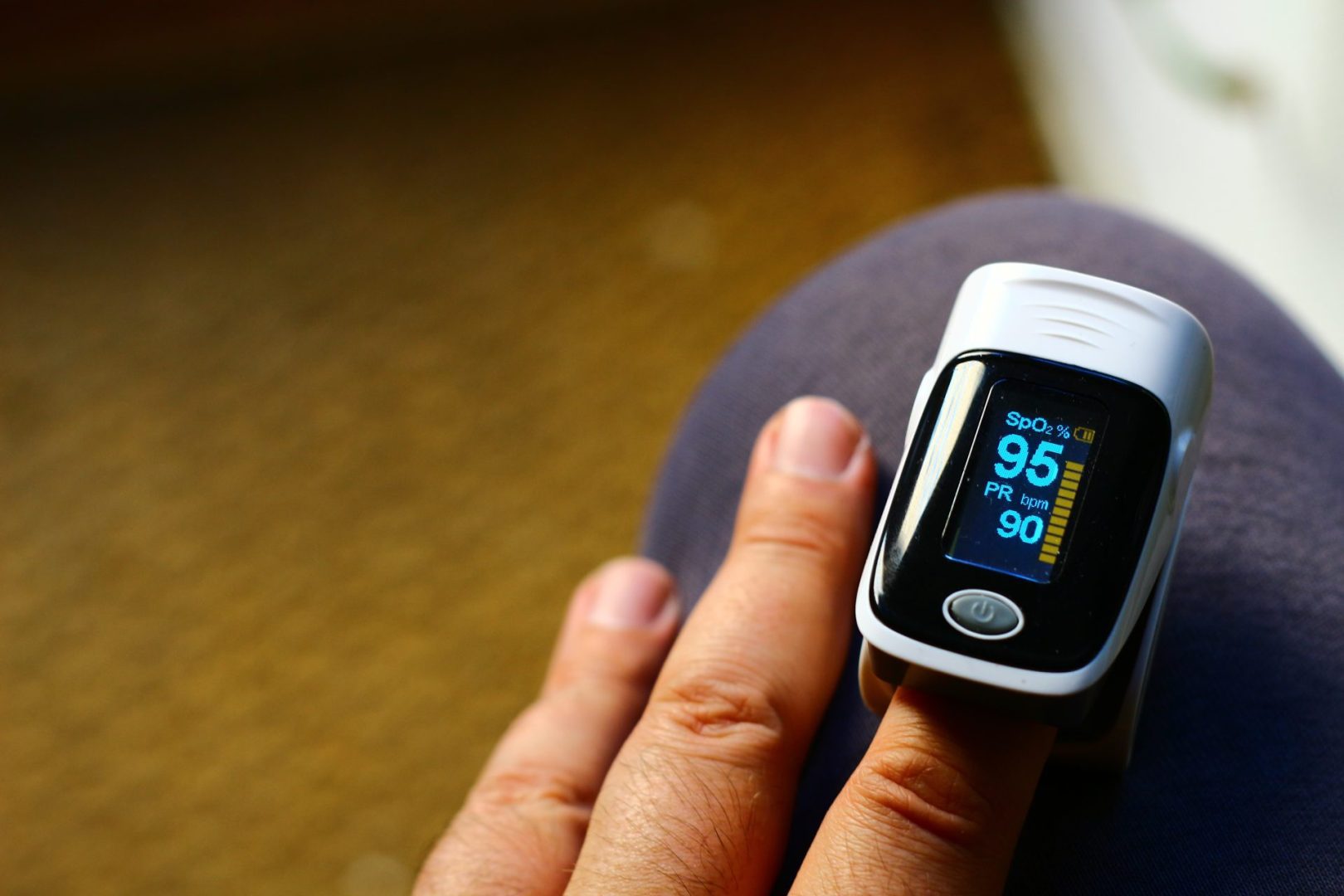Pulse oximetry is a way to estimate how much oxygen your blood is carrying without the need for blood testing. The oxygen reading from a pulse oximeter is called SpO2 which stands for “peripheral capillary oxygen saturation”. This is an estimate of the amount of oxygen being carried in your blood, represented as a percentage. Your SpO2 should be at least 88% or above. The oxygen level from a pulse oximeter is reasonably accurate. Most oximeters give a reading within 2% of what your saturation would be from blood gas testing.
Pulse Oximetry – Why do we monitor this during rehab?
This measure is monitored to determine supplemental oxygen needs at rest or with different activities. Oxygen is a drug to be used as prescribed by a doctor, and we shouldn’t use more than we need, just like other medications. When enrolled in pulmonary rehabilitation, one of the goals is to lower the amount of oxygen needed to maintain appropriate levels of saturation (oxygen titration). With successful oxygen titration, the body’s reliance on supplemental oxygen is reduced, therefore improving patient independence and quality of life.
Pulse oximetry levels are not always correlated with shortness of breath. An individual can have normal pulse oximetry measures, but still, exhibit shortness of breath. Shortness of breath is not an indicator to use supplemental oxygen! The only indicator for supplemental oxygen use is a pulse oximetry reading below 88%. Shortness of breath can be caused by many other factors such as intense physical activity, poor cardiovascular fitness, anxiety, being overweight, and generalized weakness.
Pulse oximetry – How do I get the best reading?
Readings from a pulse oximeter can be compromised if a person is wearing nail polish, artificial nails have cold hands or has poor circulation. To get the best reading, your hand should be warm, relaxed, and held below heart level. You should wait at least 15 seconds after the initial reading to ensure enough time for the pulse oximeter to record an accurate reading.
Pulse oximetry –Where do I get one?
You can purchase a pulse oximeter at many retail locations or online, often for less than $20. Use this device to monitor your activities at home to determine if/when you need to use your oxygen.

